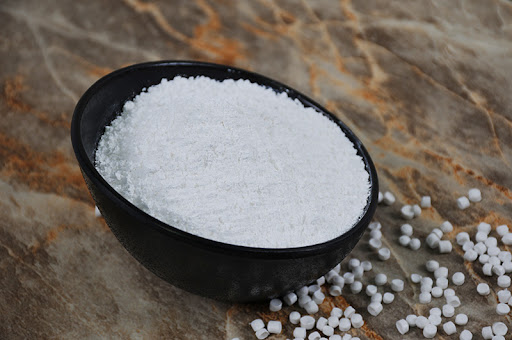
Calcium carbonate is a common inorganic compound that is widely present in nature and is widely used in various industrial fields due to its diverse physical and chemical properties. Among them, activated calcium carbonate and light calcium carbonate are two important calcium carbonate products, which have significant differences in production process, physical properties and application fields.
Physical properties
The particles of activated calcium carbonate are irregular in shape and belong to polydisperse powders. Their particle size distribution is wide and the average particle size is generally between 5-10 microns. Due to the activation treatment, its surface properties are improved, it has strong hydrophobicity, high whiteness, good fluidity and uniform dispersion.
The particle shape of light calcium carbonate is relatively regular and can be regarded as a monodisperse powder. Its particle size can be very fine, such as ultrafine calcium, fine calcium, nano calcium, etc. The whiteness of light calcium carbonate is generally very high, the standard is usually above 90, and the sedimentation volume is high, generally above 2.5. Its average particle size is generally 1-3 microns, and the particle size distribution is narrow.
Application fields
Activated calcium carbonate and light calcium carbonate also have different application fields. Due to its excellent dispersibility and affinity, activated calcium carbonate is widely used as a high-grade filler in rubber, plastic, plastic steel doors and windows, PVC cable materials, advanced coatings, pipes, tires, soles, polyethylene blown film, sealing strips, fiberglass products, cable packaging cloth, papermaking, building materials, inks, daily chemicals, textiles, feed, food additives and other industries. Especially in plastics and rubber, activated calcium carbonate can improve the dimensional stability, hardness and rigidity of products, improve processing performance and heat resistance.
Light calcium carbonate is widely used in rubber, plastic, papermaking, coatings, inks, daily chemicals, textiles, feed, food additives and other industries due to its high whiteness, high purity, high scattering coefficient and stable pH value. In papermaking, light calcium carbonate can be used as a filler and white pigment for paper to improve the opacity and brightness of paper. In coatings, light calcium carbonate can act as a skeleton as a filler to improve the wear resistance and corrosion resistance of coatings.
Although both activated calcium carbonate and light calcium carbonate are important products of calcium carbonate, there are significant differences in production process, physical properties and application fields. Activated calcium carbonate is mainly produced by physical methods, and its particles are irregular in shape, but after activation treatment, its surface properties are excellent, and it is suitable for high-grade fillers; while light calcium carbonate is produced by chemical methods, and its particles are regular in shape, high in whiteness, and large in sedimentation volume, and it is widely used in many industrial fields. Understanding the difference between these two calcium carbonate products will help you better select and use them to meet the needs of different industries.
